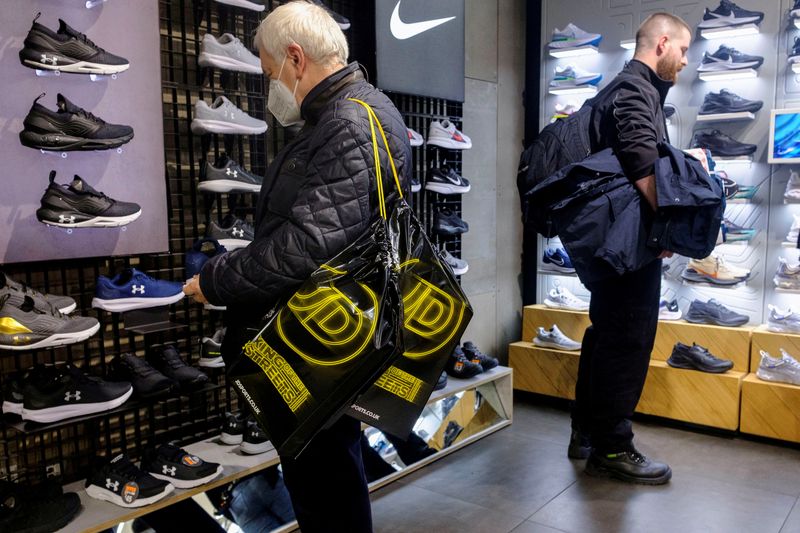Gold prices hit record high above $3,650/oz on rate cut bets, haven appeal
Investing.com -- Shares in JD Sports Fashion (LON:JD) jumped more than 7% in London trading on Friday, lifted by optimism around Nike (NYSE:NKE), the British retailer’s key supplier, as the U.S. sportswear giant signaled progress in its turnaround plan.
Nike offered a more upbeat outlook than expected, projecting a mid-single-digit decline in first-quarter revenue—better than the 7.3% drop forecast by analysts, according to LSEG data.
The company also beat estimates for its fourth-quarter sales, which fell 12% to $11.10 billion, compared with expectations of a 14.9% decline to $10.72 billion.
Nike stock soared over 10% in premarket trading on Friday. Shares in German sportswear giants Adidas AG (ETR:ADSGN) and Puma SE (ETR:PUMG) also rose between 4% and 6% in Frankfurt.
On a post-earnings call, Nike executives said U.S. President Donald Trump’s latest round of tariffs could raise the company’s costs by roughly $1 billion.
China, which faces the steepest tariff hikes, currently makes up about 16% of Nike’s U.S. footwear imports, according to CFO Matthew Friend.
However, Nike plans to reduce that to a “high single-digit percentage range” by the end of May 2026 by shifting production to other countries.
Nike posted an 86% decline in quarterly profit to $211 million, mostly due to markdowns and inventory clearance.
China remained a weak spot for Nike, with executives acknowledging that a recovery in the market will take time as the company faces a tougher economic environment and heightened competition.
To address the added pressure from tariffs, Chief Financial Officer Matthew Friend said Nike will “evaluate” corporate cost reductions. The company has already implemented price hikes on select products in the U.S.
“We will optimize our sourcing mix and allocate production differently across countries to mitigate the new cost headwind into the United States,” Friend told investors on the call.
Inventory levels held steady year-over-year at $7.5 billion as of May 31, while marketing expenses rose 15% compared to the same period last year.
